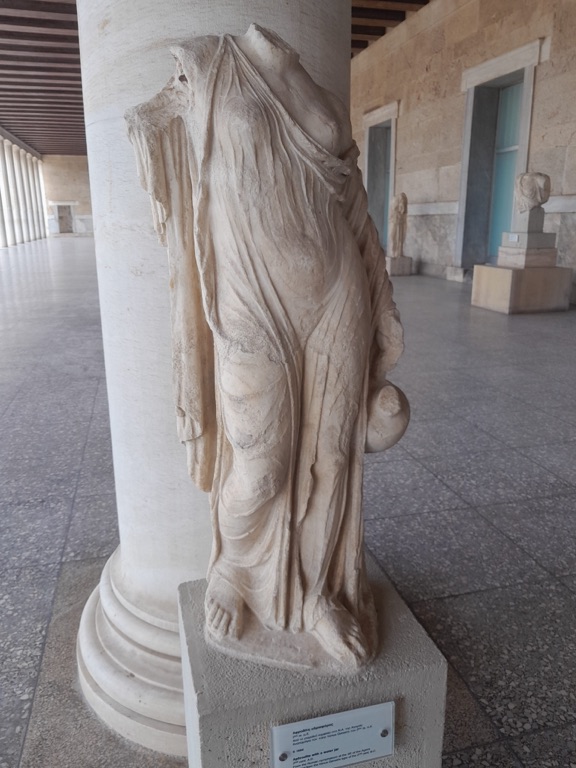Introduction to Aphrodite
Who is Aphrodite?
Aphrodite is one of the most venerated deities in ancient Greek mythology, known as the goddess of love, beauty, pleasure, passion, and procreation. Her influence pervades Greek mythology, where she is celebrated not only for her physical allure but also for her ability to stir romantic and passionate feelings among gods and mortals alike.
Get your dose of History via Email
The Origins of Aphrodite in Greek Mythology
Aphrodite’s origins are subject to various myths. The most renowned account is from Hesiod’s “Theogony,” where she is born from the sea foam (aphros) that arose when Cronus severed Uranus’s genitals and threw them into the sea. This origin story highlights her connection to the elemental forces of life and the sea.
Aphrodite’s Role and Significance in Ancient Greek Religion and Culture
Aphrodite held a central place in ancient Greek religion and culture, embodying the complexities of love and beauty. She was revered not only for her influence over romantic and erotic love but also for her role in the social and political bonds formed through marriage and friendship. Her worship was widespread, with numerous festivals and rituals dedicated to her honor.
Variations of Aphrodite’s Myths Across Different Cultures
Aphrodite’s myths exhibit variations as they were adopted and adapted by different cultures around the Mediterranean. The Romans, for instance, worshipped her as Venus, emphasizing her aspects as a mother and a symbol of imperial Rome. In other regions, she was syncretized with local goddesses, acquiring unique attributes and forms of worship.
Mythology and Legends
The Birth of Aphrodite
The most iconic tale of Aphrodite’s birth is her emergence from the sea foam, a symbol of her connection to the marine and the generative forces of nature. This origin myth underscores her elemental power and her intrinsic beauty, setting the stage for her influence in the pantheon and the mortal world.
Aphrodite’s Family: Relations with Other Gods and Goddesses
Despite her birth from the sea, Aphrodite was integrated into the Olympian family. She was married to Hephaestus, the god of craftsmanship, although her numerous affairs, notably with Ares, the god of war, underscore the tumultuous nature of her relationships within the pantheon.
Key Myths Involving Aphrodite
- Aphrodite and Adonis: A tale of love and loss, highlighting Aphrodite’s mortal lover Adonis, whose death brought about the cycle of rebirth.
- The Judgment of Paris: Aphrodite’s promise of the most beautiful woman, Helen, to Paris, leading to the Trojan War.
- Aphrodite and Ares: Their affair represents the union of love and war.
- Aphrodite and Hephaestus: A marriage that symbolizes the union of beauty and craftsmanship.
- Aphrodite and Psyche: A story of love’s trials, with Psyche undergoing challenges to reunite with her lover, Eros, Aphrodite’s son.
Aphrodite’s Lovers and Children
Aphrodite had many lovers, both divine and mortal, and bore several children, including Eros (Cupid), the god of love, and Aeneas, a hero of the Trojan War and an ancestor of the Romans.
Aphrodite’s Role in the Trojan War
Aphrodite played a pivotal role in the Trojan War, siding with Paris and the Trojans after being promised the most beautiful woman. Her involvement in the war underscores her influence over human affairs and the destructive potential of love and beauty.
Symbols and Attributes
Symbols Associated with Aphrodite
Aphrodite is often depicted with symbols of beauty and love, such as doves, sparrows, swans, myrtle, and roses. These symbols reflect her domains of love, beauty, and fertility.

Aphrodite’s Attributes and What They Represent
Her attributes, including the magical girdle that made her irresistible, underscore her power to stir desire and affection. Her association with the sea, reflected in her birth, highlights her elemental nature and her role as a life-giver.
Sacred Places and Temples Dedicated to Aphrodite
Aphrodite’s worship was centered in numerous sacred places and temples across the ancient world, including Cyprus and Cythera. These sites were important pilgrimage destinations, where devotees sought her favor in matters of love and fertility.
Worship of Aphrodite
Ancient Rituals and Festivals in Honor of Aphrodite
The worship of Aphrodite was marked by various rituals and festivals, such as the Aphrodisia, which celebrated her aspects of love and beauty. These occasions often involved offerings, processions, and rites aimed at securing her blessings.
The Cult of Aphrodite: Practices and Temples
The cult of Aphrodite varied regionally, with practices and temples reflecting local interpretations of her myths and aspects. Her priesthood played a crucial role in maintaining her worship and interpreting her will through oracles and divination.
Aphrodite’s Priesthood and Their Roles
Aphrodite’s priesthood, including both men and women, were custodians of her rituals and temples. They facilitated the worship of Aphrodite, overseeing ceremonies and offerings to ensure her favor and goodwill.

The Spread of Aphrodite’s Worship in the Ancient World
Aphrodite’s worship spread throughout the ancient Mediterranean world, influenced by trade, conquest, and cultural exchange. Her cult adapted to local customs and deities, illustrating the widespread appeal and adaptability of her worship across different cultures and epochs.

